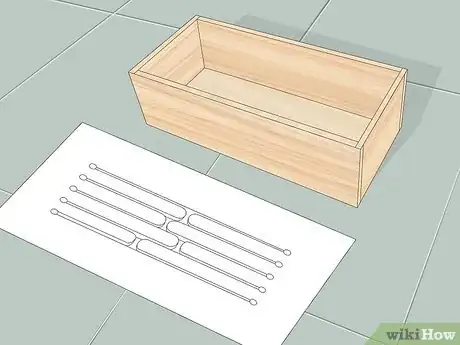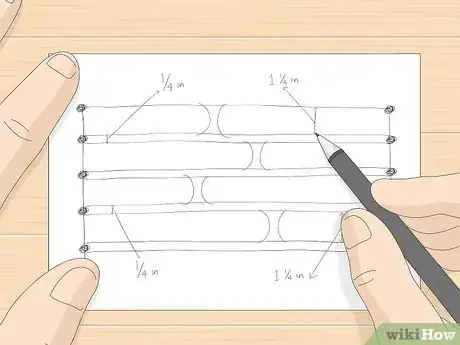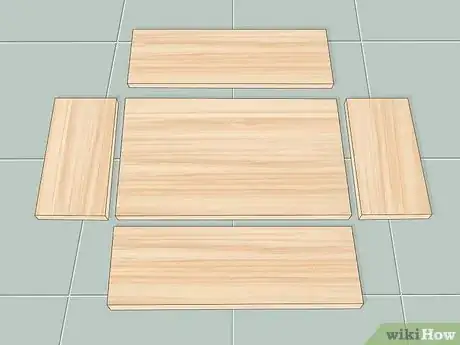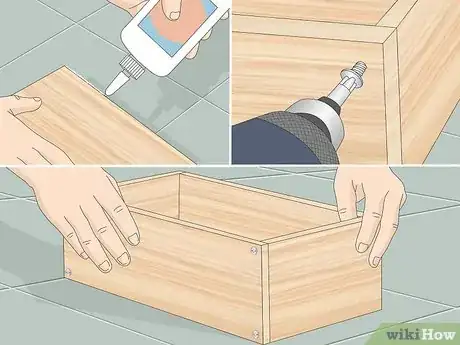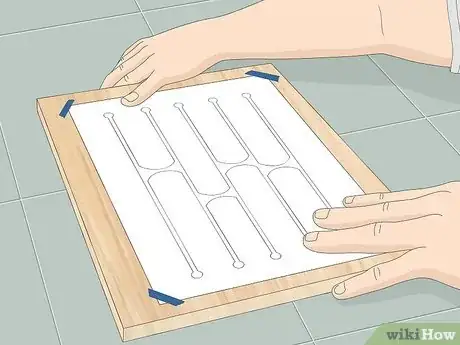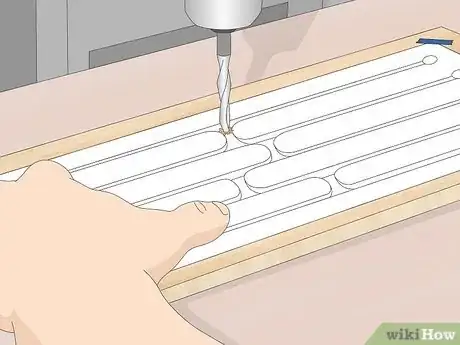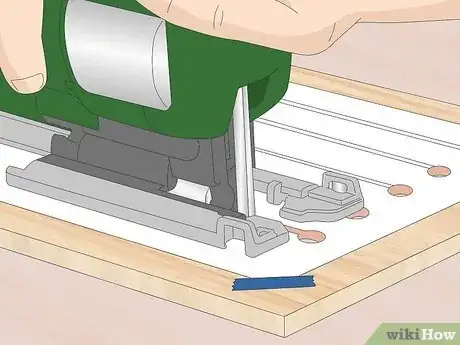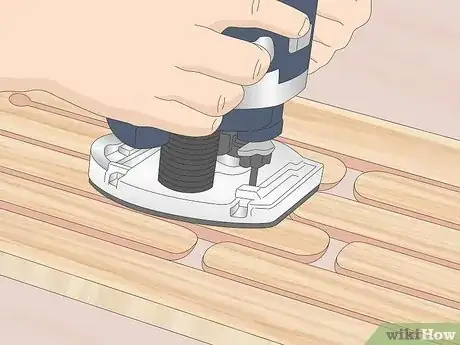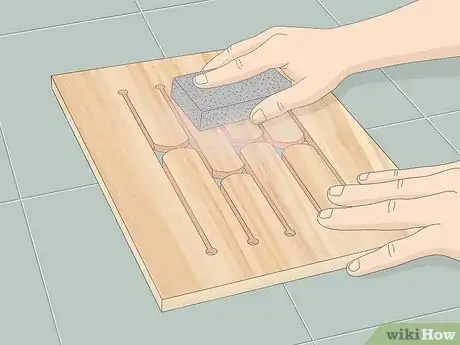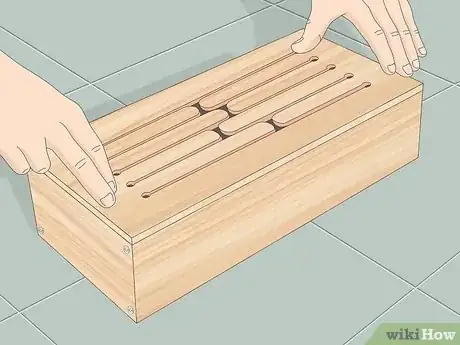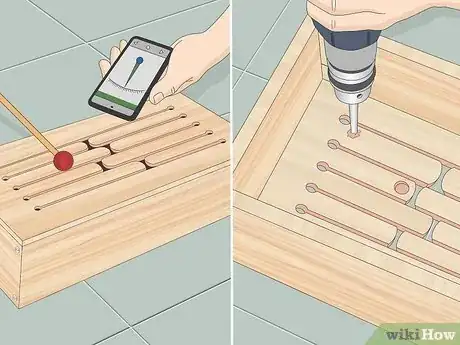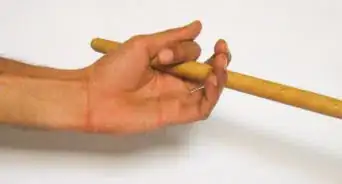wikiHow is a “wiki,” similar to Wikipedia, which means that many of our articles are co-written by multiple authors. To create this article, 15 people, some anonymous, worked to edit and improve it over time.
This article has been viewed 73,511 times.
Learn more...
Tone Drums, also referred to as "log drums" are unique and mellow sounding percussion instruments. Their basic construction is a long, hollow, rectangle box whose lid is perforated and cut into "tongues" which, when struck, produce a warm, mellow and earthy "thunk". While nearly anyone with a few woodworking tools can produce a tone drum, it takes construction experience and a good ear to produce a drum with tones that are tuned in a scale. Therefore, it is suggested that you make a two tone drum to begin with and experiment with the length of the tongues on it before advancing to more tones/tongues.
Steps
-
1Determine the size of your completed drum and the number of tones you wish to produce.[1]
-
2Calculate an inch and a quarter wide section of lid for each tone. (1 inch tongue, with a quarter inch spacing on either side for cutting and sanding) A two tone drum could be as narrow as 3 inches (7.6 cm) if you placed the tongues end to end with their striking ends in the center.Advertisement
-
3Construct a solid wood box from straight grained hardwood. The sides and bottom should be a minimum of half an inch thick, with larger boxes having thicker walls.[2]
-
4Carefully glue, screw, and corner block all edges to form a box that is solid and airtight.[3]
-
5Construct the top (your striking surface) from a single plank of straight grained hardwood.[4]
-
6Draw your proposed tongue pattern on paper first.
-
7Transfer the pattern onto the wood.
-
8Using a Drill press, drill out the ends of each cut line.
-
9Use a saber saw or skill saw to cut the lines for your tongues.
-
10Router the lines with a quarter round bit to smooth the edges.
-
11Sand everything smooth.[5]
-
12Place the striking lid atop the box and test the tones produced.[6]
-
13Adjust the length(s) of your striking tongue(s) to tune your drum. You cannot make them longer but you could sand them shorter to make the produced tone higher.
Community Q&A
-
QuestionWhat kinds of wood work best for a tongue drum?
 Community AnswerMaple needs a hard hit and can break if not made structurally sound, and oak is good because it's hard and resonates better. It depends on your tone and mood of the instrument.
Community AnswerMaple needs a hard hit and can break if not made structurally sound, and oak is good because it's hard and resonates better. It depends on your tone and mood of the instrument. -
QuestionNice tutorial. Do you have maybe a sketch for the top? I mean a theoretically tuned version? Thanks!
 Community AnswerClick on the image in Step 6. You can save/print that and use it as a starting template. There are too many variables involved to give a one-size-fits-all answer for a pleasantly tuned instrument (wood itself; thickness; width; chamber size and shape; etc. Some of that is why some instructions speak about the ratio of the tongues, rather than exact measurements. Especially the first time, you have to experiment and learn some fundamentals. Have fun while learning, and make sure it sounds good to you, not just a tuning mechanism. At the end, even if it isn't a great drum, you will have a unique gift box. You will also have much improved skills and knowledge for your next drum.
Community AnswerClick on the image in Step 6. You can save/print that and use it as a starting template. There are too many variables involved to give a one-size-fits-all answer for a pleasantly tuned instrument (wood itself; thickness; width; chamber size and shape; etc. Some of that is why some instructions speak about the ratio of the tongues, rather than exact measurements. Especially the first time, you have to experiment and learn some fundamentals. Have fun while learning, and make sure it sounds good to you, not just a tuning mechanism. At the end, even if it isn't a great drum, you will have a unique gift box. You will also have much improved skills and knowledge for your next drum. -
QuestionHow do I route a saw cut line with a router?
 Community AnswerPlace a 1x3 strip along side it and clamp it with a vice, so it does not slip. Run the router along that edge.
Community AnswerPlace a 1x3 strip along side it and clamp it with a vice, so it does not slip. Run the router along that edge.
Warnings
- Take appropriate cautions with all woodworking tools.⧼thumbs_response⧽
Things You'll Need
- Straight grained hardwood planks of sufficient size.
- Skill saw
- Saber saw
- Sandpaper
- Router
- Wood glue
- Woodworking clamps
- Workbench or other sturdy, flat working surface.
